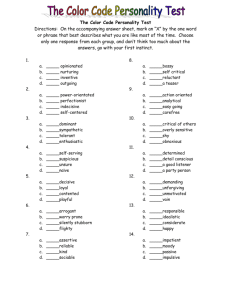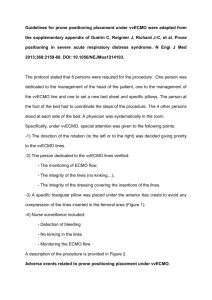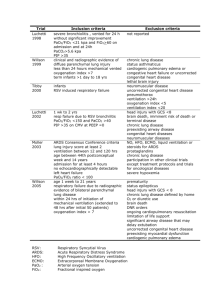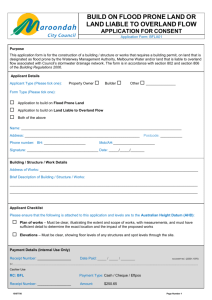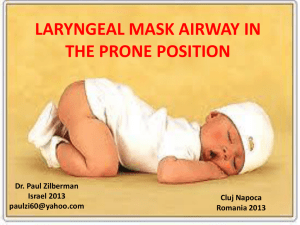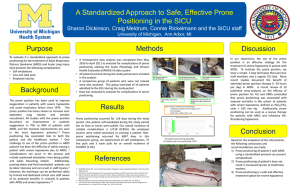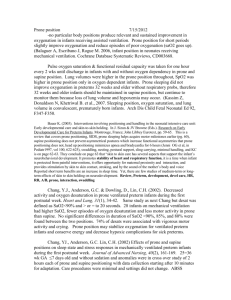The Prone Position in the Critically Ill
advertisement
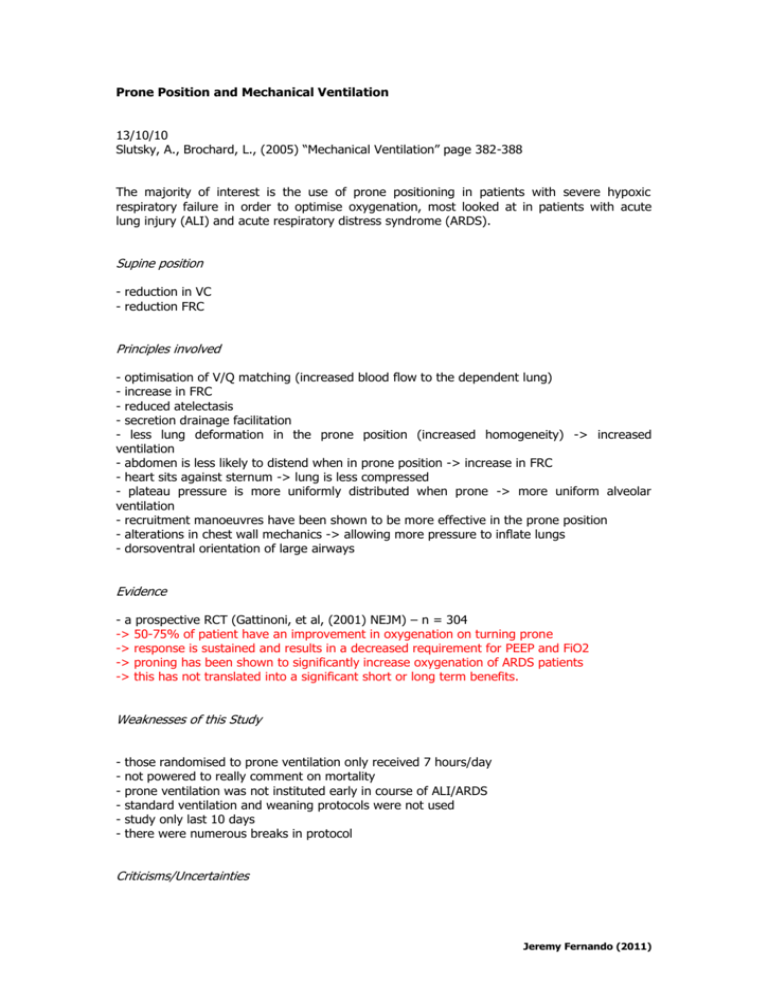
Prone Position and Mechanical Ventilation 13/10/10 Slutsky, A., Brochard, L., (2005) “Mechanical Ventilation” page 382-388 The majority of interest is the use of prone positioning in patients with severe hypoxic respiratory failure in order to optimise oxygenation, most looked at in patients with acute lung injury (ALI) and acute respiratory distress syndrome (ARDS). Supine position - reduction in VC - reduction FRC Principles involved - optimisation of V/Q matching (increased blood flow to the dependent lung) - increase in FRC - reduced atelectasis - secretion drainage facilitation - less lung deformation in the prone position (increased homogeneity) -> increased ventilation - abdomen is less likely to distend when in prone position -> increase in FRC - heart sits against sternum -> lung is less compressed - plateau pressure is more uniformly distributed when prone -> more uniform alveolar ventilation - recruitment manoeuvres have been shown to be more effective in the prone position - alterations in chest wall mechanics -> allowing more pressure to inflate lungs - dorsoventral orientation of large airways Evidence - a prospective RCT (Gattinoni, et al, (2001) NEJM) – n = 304 -> 50-75% of patient have an improvement in oxygenation on turning prone -> response is sustained and results in a decreased requirement for PEEP and FiO2 -> proning has been shown to significantly increase oxygenation of ARDS patients -> this has not translated into a significant short or long term benefits. Weaknesses of this Study - those randomised to prone ventilation only received 7 hours/day not powered to really comment on mortality prone ventilation was not instituted early in course of ALI/ARDS standard ventilation and weaning protocols were not used study only last 10 days there were numerous breaks in protocol Criticisms/Uncertainties Jeremy Fernando (2011) - who, when, duration of time left prone and how many days should be prone for? - labour intensive - movement to prone position places patient at great risk because of their inherent instability - if people are considering proning patients they now should be referred for ECMO or HFOV (another treatment now available if not contraindicated) - if an accidental extubation takes place timely re-intubation is not easy (not documented in literature) - requires nursing staff and medical staff who is familiar with the process (should not be attempted by untrained staff) - increased number of new pressure sores - increased ICP - decreased tolerance of enteral feeding Gattinoni L et al. N Engl J Med 2001; 345:568-73 Broccard AF. Chest 2003; 123:1334-6 Beuret P et al. Intensive Care Med 2002; 28 :564-69 Messerole E, Peine P, Wittkopp S, Marini JJ, Albert RK (2002) “The pragmatics of prone positioning.” Am J Respir Crit Care Med 165:1359–1363 28/10/10 Sud, S et al (2010) “Prone ventilation reduces mortality in patients with acute respiratory failure and severe hypoxemia: systematic review an meta-analysis” Intensive Care Med, 36:585-599 - meta-analysis of RCT’s (10) - prone vs supine position with hypoxic respiratory failure - inclusion: adults, children, PF ratio < 300 - exclusion: neonates - primary outcome = hospital mortality with regard to severity of hypoxaemia - secondary outcomes = duration of MV, ventilator free days to 28 days, adverse events… -> significant decrease in mortality in those with PF ratio of < 100 (NNT 11) -> increased oxygenation -> reduced VAP -> no effect on duration of mechanical ventilation -> increased adverse effects: ETT obstruction, chest tube dislodgement, pressure ulcers INDICATIONS - life threatening, refractory hypoxaemia - lung injury that may respond to prone ventilation CONTRAINDICATIONS - untrained staff - increased intracranial pressure COMPLICATIONS - decreased enteral nutrition - ETT obstruction or dislodgment Jeremy Fernando (2011) - chest tube dislodgement - pressure trauma: -> ocular -> blindness, orbital skin necrosis -> bridge of nose -> mentum -> humeral head -> breast implants -> ASIS -> male genitals -> knees Jeremy Fernando (2011)
